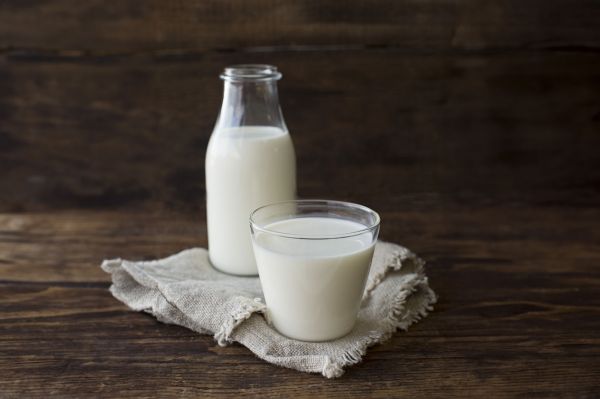Novel Research

The researchers from Cork University Hospital reviewed the three methods of CMPA management generally used. In their paper they compared and contrasted the efficacy, safety and effects on immune response. They found the stepwise introduction of baked cow’s milk, using what’s known as the ‘milk ladder’, was seen to be safe and effective. The gradual introduction of baked milk showed a faster rate of tolerance compared to the complete avoidance of milk. While the ‘milk ladder’ has been used in clinical practice in Ireland for 10 years, this review highlights it as having one of the most successful outcomes for patients.
The second strategy reviewed was the complete avoidance of cow’s milk, which protects against allergic reaction until natural tolerance occurs. However, using this as a strategy to manage CMPA was noted as challenging, as dietary avoidance requires dietitian advice on foods to avoid that may contain traces of cow’s milk. Although food law requires accurate labelling, accidental contamination can occur, as well as in other settings such as restaurants.
The third strategy examined was oral immunotherapy, where a child consumes the measured tolerable amount daily, eventually increasing the amount of milk consumed over a number of weeks. The authors question the practicality of this strategy, as there is a larger commitment for parents and children to have at least three oral food challenges. They note the process needs to be managed by a specialist which may be an issue if waiting lists are long.
Cow’s milk protein allergy
CMPA is one of the most common food allergies in infants across the globe, affecting around 1 per cent of Irish children. It can appear around six months of age and most children naturally grow out of it by ages three to five years. The symptoms can include gastrointestinal (e.g. vomiting, cramps), dermatological (e.g. hives and facial swelling) and respiratory (e.g. wheezing) issues. In severe cases, anaphylaxis can occur.
The general approach and management of CMPA is the avoidance of milk products until the patient naturally outgrows the allergy and can introduce milk into their diet. However, as cow’s milk provides essential nutrients for healthy growth and development, the complete avoidance of cow’s milk may have a negative impact on the child’s nutritional status and growth, as well as increase their risk of severe allergic reactions. Other mammalian milks such as goat and sheep are often not good replacements, as some may cause similar reactions. There is 30-50g of protein per litre of cow’s milk, with at least 20 proteins which are potential allergens. Most CMPA is caused by whey proteins, which make up about 20 per cent of all proteins contained.
Milk ladder
Most commonly used in Ireland, the milk ladder can be managed by a dietitian to safely re-introduce cow’s milk products if and when the allergy subsides. It involves having baked milk products in increasing amounts (e.g. biscuit crumbs, 1/8 biscuit, ¼ biscuit etc), progressing to less extensively baked products until the child can tolerant unheated milk. The baking process changes the stability and structure of different milk allergens, reducing their ability to cause a reaction.
The milk ladder is often preferred as a management strategy, as it is home-based and uses readily available milk products. However, research shows successful progression requires a high level of support for parents, through education and reassurance, especially if mild allergic reactions occur at steps in the ladder. Studies show maternal anxiety has been strongly linked to success rate, with poorer outcomes for children whose mothers had higher levels of anxiety.
Implications of this research
As the prevalence of allergy rises worldwide, including in Ireland, in the future more children may be managed for CMPA using the milk ladder. In the next phase of this study, the researchers will compare cohorts of paediatric patients diagnosed with CMPA from three hospitals. Retrospective analysis will be used to compare the effectiveness of each management strategy. The researchers hope that the results of this study will help guide the future management of CMPA in Ireland.
For more information on this research study see: Cronin et al. Nutrients 2023,15(6),1397;
https://doi.org/10.3390/nu15061397
For information on research at the NDC see https://ndc.ie/ndc-research/




